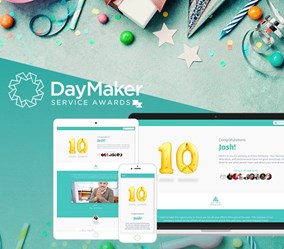The New Rules of Engagement
What do your best employees value most? You don’t have to become a mind-reader. You just need the right tools that deliver actionable insights.

Find an employee engagement program that delivers results.
enquiries@au.biworldwide.com | +61 2 89085600
Employee engagement is consistently ranked as a top priority by a large majority of business leaders, however, only a small percentage say they actually have highly engaged workforces. The challenge is that most engagement approaches are decades old and likely to do more harm than good. Business dynamics in the 21st century demand a different approach.
How can I raise employee engagement levels in my company?
Living in an always-connected, online world has brought about many changes to traditional business models and long-standing assumptions about social interaction and personal motivation. This is especially evident in today’s workplace, where traditional employee-recognition programs no longer work because the needs and wants of your employee base have likely changed significantly.
Today's hybrid workforce has varying needs of who are working from home and those who are working from the 'office', but we also have a multitude of ways in which our workforce has diversified. For example, we have a multi-generational workforce with baby boomers leaving the workforce in a few years and the Gen Z entering the workforce. This generational shift has changed the landscape and how we engage employees. No doubt the definition of the word employee itself has changed!
We have flexi-time workers, gig workers, part-time, or contractors. Then we have those who work in an office vs in a factory or a retail store or a warehouse — or are on the go! We have a hybrid of employees with different personalities, how they handle the new work situation, their personal situations at home and in life. And, of course, diversity of the workforce has always been a focal point.
So with all this change, we need to reimagine our recognition framework. The traditional recognition framework, based primarily on reach and frequency, may not be sufficient anymore — we need to focus on how employees think and what they feel. We need to find genuine ways to get and maintain employees' attention and focus?
The New Rules of Engagement℠ are 12 imperatives for leaders and managers because the degree to which an organisation delivers on each has important consequences for the motivation of its employees. Because people are strongly reciprocal, a company gets the level of performance from them that it deserves.
The New Rules of Engagement survey asks employees a series of questions relating to the 12 rules.
Why are there "New Rules" of Employee Engagement?
Ready to leverage the New Rules of Engagement at your company?















